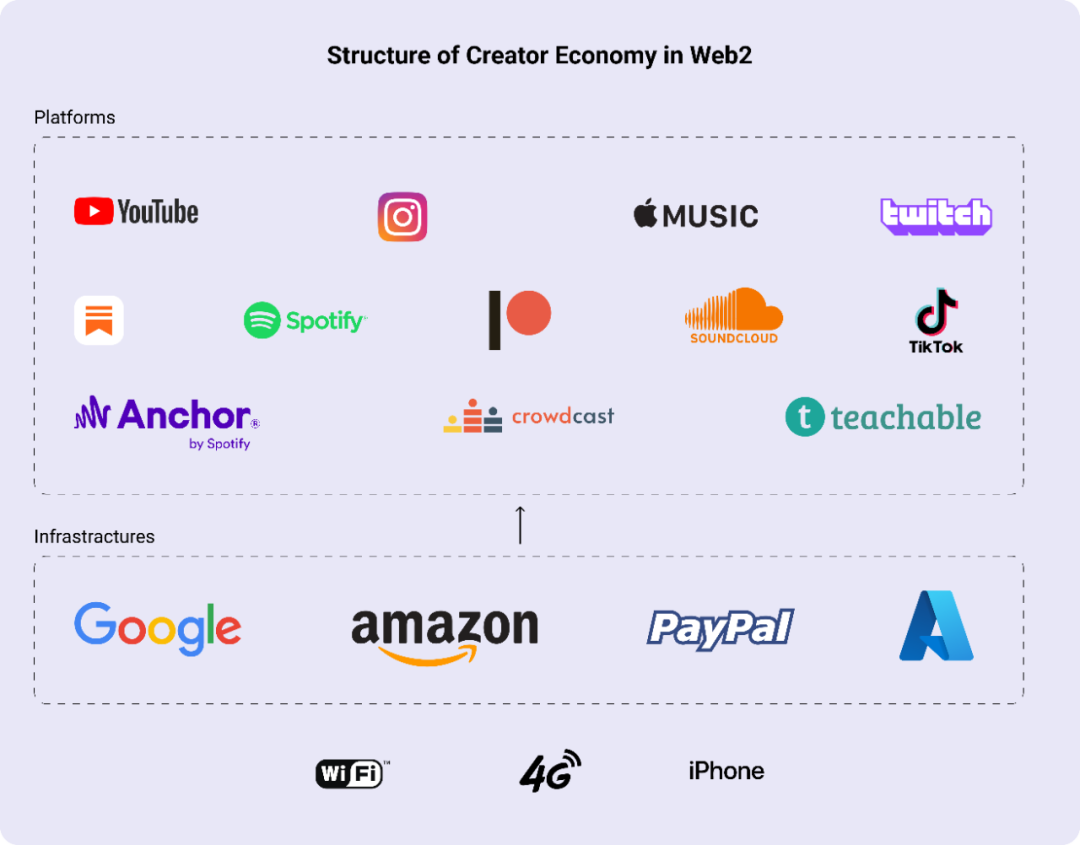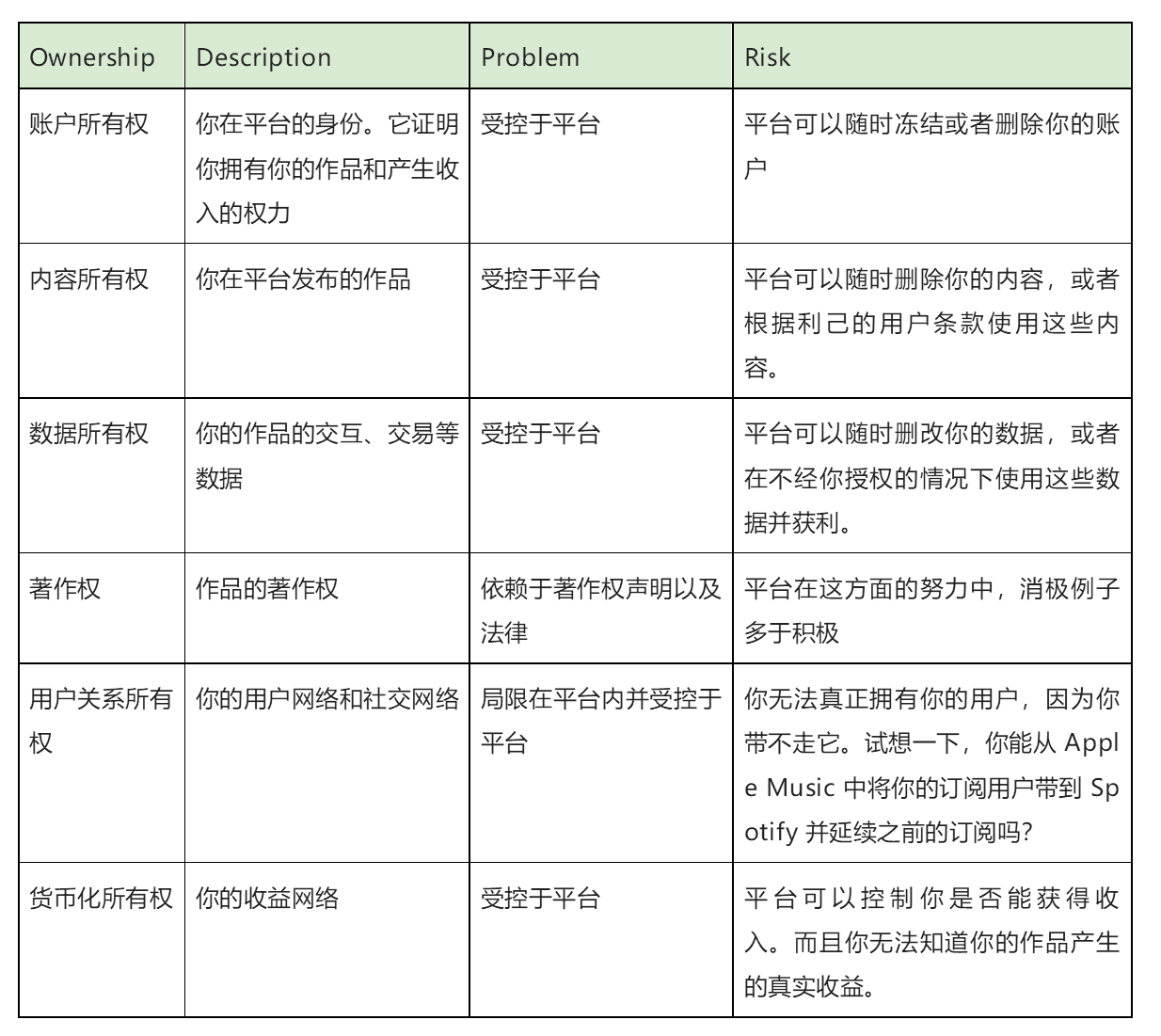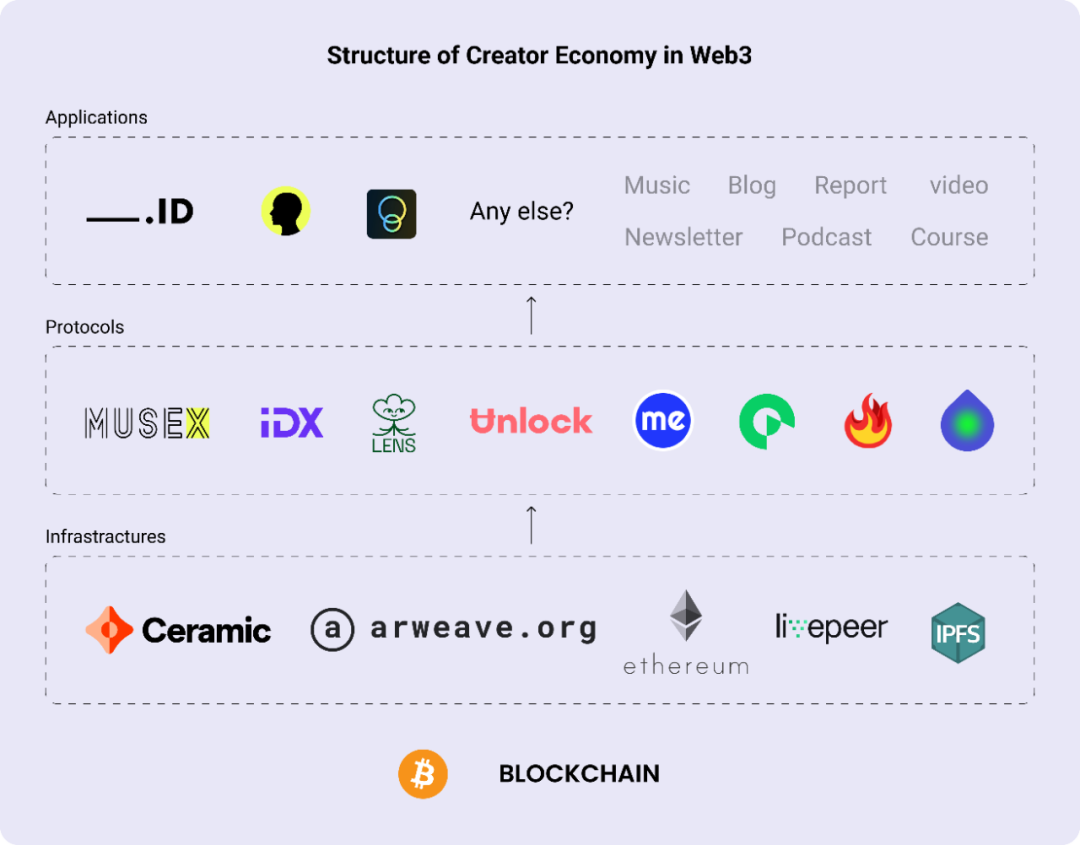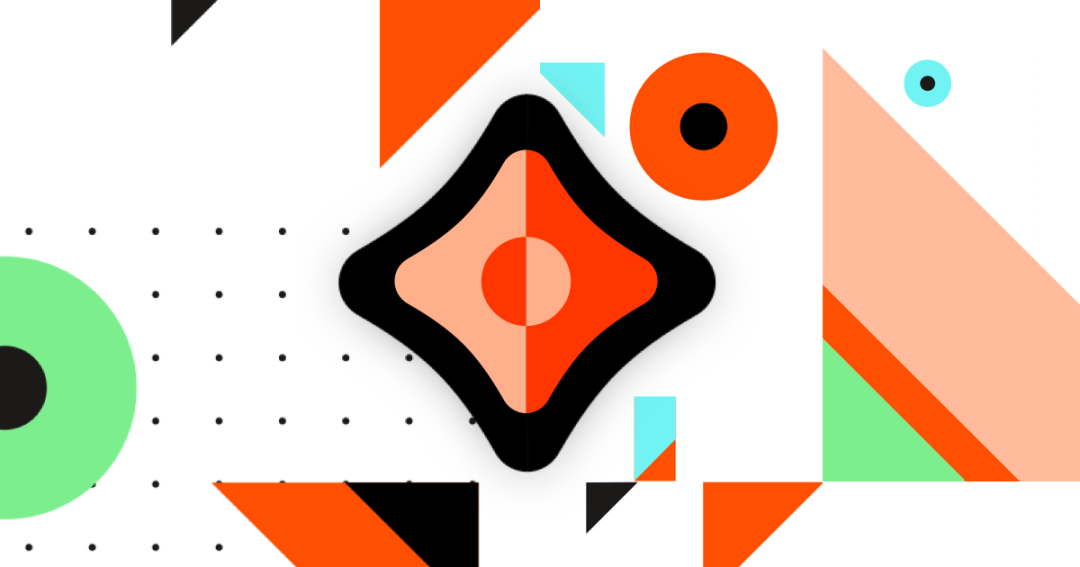Note: This is my article about the creator economy in the Web3 era. It mainly introduces some of my thoughts on the creator economy in the Web3 era from the perspective of technical structure。
This is the best of times for all creators.
In 2003, I entered the group of creators as a musician and have worked as a freelancer in music and film for more than 10 years. This experience gave me two valuable assets: 1) understanding of the industry; 2) how to survive and live better as a creator.
I entered the Crypto space because of DAO, because I think DAO can help those like me who cannot realize their self-worth under the traditional system realize their self-worth. But it was 2018, it was still early, so I started to participate in some infrastructure construction, keep learning, and wait for the time when the time comes.
Today, it stands before us.
New technologies, new ideas, and new social consensus are jointly promoting a new wave, a wave called Web3. It is changing many industries and groups, including creators.
What is this change? How do we get involved?
first level title
What is the Creator Economy
Many people mistakenly think it is a new concept. In fact, it has always been around us. Youtubers, podcasters, writers, self-media, musicians, painters, etc. are among them, but it is by no means the whole picture. How to define its scope? I have summarized a few features:
free
creator-centric
Creative work (usually digital products or virtual services)
Profitable through monetization tools
music
music
painting
photos, illustrations
comics/cartoons
design
Meme
blog post
blog post
literature
podcast
podcast
audio book
Video/Vlogging
guide
guide
financial advice
course
tool
application
game
tool
Encyclopedia
And some monetization avenues:
sell digital content
Advertisement Income
sponsored content
subscription
subscription
tip
one-time sale or donation
Accept fan club donations
Participate in Affiliate Marketing
fan donation
course fee
Fans monetize
live or virtual event
Social Token
Note: Thanks to Werner Geyser for his article "State of the creator economy" for providing us with many use cases for creative job categories and monetization paths.
We can summarize the creator economy in one sentence: the creator economy is a creative economic behavior based on free individuals. It can also be described from another angle: do what you love and make money from it. If you don't love it, even if you are a freelancer, you are still just laboring, not creating. So there is also a saying: Passion Economy.
Now, I believe you have a preliminary impression of the creator economy, let's go deeper and look at the creator economy in the Web2 era.
Creator Economy in the Web2 Era
The development of Web2 is amazing. The improvement of computer performance and network bandwidth, the maturity of network technologies such as 4G, WiFi, online payment, and cloud services, the substantial reduction in the cost of hardware equipment (especially professional equipment), and the emergence of new user interaction methods represented by IOS , so that everyone has the conditions to create and share digital products or virtual services. This is the "age" premise for the creation of the creator economy.
first level title
The Structure of the Web2 Creator Economy

File storage, data, and payment are three important infrastructures of the creator economy.
File storage brings your creations into the digital world, it's the foundation of everything
The data records all your data in the creator's economic behavior, it is your account book
Payment provides you with a revenue settlement system
Platforms use this infrastructure to set the stage for you. They integrate file storage, data services, and payment into their products and services, thereby providing creators with creation and distribution tools, and helping creators find audiences through content discovery mechanisms and traffic strategies, and monetization tools to help creators Get benefits.
These platforms have created the prosperity of the creator economy in the Web2 era, which allows those creative individuals to compete on the same stage with groups (even monopoly groups) that have been operating for decades. Today, most of the news you see comes from individuals, most of the lessons you learn come from individuals, and most of the programs that bring you happiness come from individuals.
question
question
The reason why we say NO is because most of us may have experienced some unpleasant encounters, such as accounts or works being inexplicably frozen by the platform, terms unilaterally updated by the platform, data deleted or used by the platform quietly and without any interest, and profits being lost. The platform irrefutably deducts and so on.
We cannot deny that these platforms provide us with a very good experience to run the creator economy, even for free. But the price is that we surrender something that is especially important to creators: ownership.
Ownership is the supreme and exclusive right we have over something.account ownership
account ownership
Content Ownership
data ownership
copyright
User Relationship Ownership
monetized ownership
As mentioned above, in the structure of the Web2 creator economy, file storage, data, and payment are directly integrated on the platform. In other words, the platform is the actual controller of these ownership. What are the consequences? Let's break it down a bit:

The conclusion is very clear. The issue of ownership is not just as simple as who controls it. It is related to the core interests of creators. This is a very important fact:
The essence of creator economy is ownership economy.
However, the above analysis tells us that the basic logic of the creator economy in the Web2 era is that creators hand over ownership to the platform in exchange for profit opportunities, and the platform uses these ownership to maximize its own interests.
We can't pronounce this model wrong, because it's up to you as a creator to care. Do you care that the platform controls everything about you, do you care that the platform uses your ownership to produce greater benefits but never distributes the benefits to you.
If you don't care, then Web2 is perfect for you. I have always held a point of view that Web3, like DAO, does not stand on the opposite side of the problem to solve the problem, it just helps those who need help.
first level title
Creator Economy in the Web3 Era
Time to talk about Web3.
Web3 represents a paradigm shift. A paradigm shift means a change in the underlying logic, ideas, and even the worldview.
One description is trending on Twitter:
Web1: Read
Web2: Read, Write
Web3: Read, Write, Own
not at all.
not at all.
Although there are already a large number of excellent Web3 infrastructures, it does not mean that the applications built on them belong to Web3 (MetaMask has shown us this fact). Many applications still use various barriers to restrict users from leaving themselves, which is the opposite.
The Web3 you see is not as perfect as you imagined.
protocol
protocol

I believe you are not unfamiliar with terms such as HTTP, TCP, and IP, which are common Internet protocols. The significance of the protocol is to realize data transmission and communication between terminals by formulating a unified technical standard. In the context of Web3, a protocol is usually a smart contract, which also provides some standards and conventions to implement agreed transactions, especially transactions, between end-to-end without third-party intervention. Since it is just a set of standards, it will not be compulsorily owned and controlled by anyone, and since it is a smart contract, it is executable and must be executed.
For the creator economy, an open protocol layer can make everything around ownership sovereign and liquid.
Non-sovereignization prevents us from truly owning all the value we create.
Immobility prevents us from truly breaking away from platform barriers and allowing our creations to flow freely and produce value on different platforms.
Take a simple example:
Under the Web2 creator economic structure of infrastructure + platform, you have created a lot of content on Substack and have many subscribers, but now you have found a place with better user experience and services, let’s imagine it as X for the time being. You cannot use your Substack account to log in to X to manage your content on Substack, and let your Substack subscribers continue to enjoy the subscription rights of your subsequent creations in X, and at the same time directly obtain income from Substack subscribers on X.
Likewise, you can't do the same thing between Spotify and Apple Music.
Can the protocol layer reverse this? Let's look at an example of the IDX protocol:
IDX is an identity protocol based on the Web3 infrastructure Ceramic. Any application can build its account system through the IDX protocol, just like what DAOhaus has implemented. The account you registered with DAOhaus (including wallet address, nickname, avatar, introduction, social links, contact information, etc.) is not stored on the server of DAOhaus, but is recorded on the Ceramic network and decentralized storage through the IDX protocol, and is managed by you fully control. When you access any application that supports the IDX protocol, you only need to connect your wallet, and your account will be automatically synced to the new application. It's like you register an account with Amazon, and then you can use this account to log in directly to Google.
As you may have noticed, this is a real use case of infrastructure (Ceramic) + protocol (IDX) + application (DAOhaus). Through such a structure, we have achieved the sovereignty and mobility of account ownership. If accounts, content, data, copyrights, user relationships, monetization, and other transactions around ownership are protocolized, it may bring us into a new imaginary space:
As a creator, you can connect your wallet address on any platform to create an account and start creating. When your creation is complete, your creation will be "deposited" in your wallet address, just like ERC20 Token, you have absolute sovereignty.
When you want to expand your audience, you only need to connect your wallet on other platforms, and the content you create on all platforms will be recognized and can be executed (including sharing, distributing rights, obtaining benefits, etc.).
You can choose to monetize Lego from different agreements, such as subscriptions, sales, product placements, etc. to start your economic behavior. Monetized Lego from different works, different platforms, and different protocols will form a liquid settlement network, linking various platforms like an oil pipeline and flowing income to your wallet address. It also completely belongs to you just like the assets in your wallet, and no platform can interfere with all of this, let alone deprive or deduct your income (however, I suggest that the agreement write a benefit distribution parameter, such as an agreement by the agreement, the creator, the platform The profit distribution ratio composed of three parties, when the creator confirms, it will be automatically distributed by the smart contract from the moment the cash flow is generated).
The same is true for your user relationship, which will be recorded at the protocol layer and thus truly owned by you. No matter which platform you migrate to, all user interaction data such as your user subscriptions, fan relationships, and social records will always be with you.
This is only the perspective of the creator, and this change will also bring new imagination and new opportunities for all participants. Therefore, its significance is not only to liberate creators, it may redefine the ownership economy, as well as the traffic and data economy. This is a market with tens of millions of creators.
first level title
A Blueprint for the Web3 Creator Economy
I have sorted out some ecological projects of the Web3 creator economy according to the structure of infrastructure->protocol->application. First of all, let me explain that the projects in this blueprint are only limited to the infrastructure->protocol->application structure, so it is narrow and does not cover a large number of projects outside this structure. In addition, I hope to focus more on the creation itself, so I did not include peripheral services, such as the NFT trading market.

infrastructure
infrastructure
Storage, data and payment are still important infrastructures of the creator economy in the Web3 era. Arweave, Ethereum, Livepeer, and IPFS are already widely known. Let me briefly introduce Ceramic.

protocol
protocol
IDXIt is an identity protocol. As mentioned above, accounts created through it can be fully owned by users, and account data can flow freely between multiple applications.
Lens Protocol It is a highly combinatorial social protocol. This means that you can realize the information transfer and interaction between "Discord" and "Telegram" (of course this is just an analogy). However, the Lens protocol can also play an important role in the creator economy, such as user relations, which can make your users completely belong to you and flow with you, as described above.
UnlockMonetizing Lego can be provided for the creator economy, and the Unlock protocol provides convenient monetization channels, such as subscriptions, purchases, etc.
IQ Protocol is a rental agreement. It realizes the leasing services of DeFi, game assets and other scenarios through FT or NFT with a limited period. And for the creator economy, it's an interesting monetization lego for things like subscriptions.
Lit Protocol is an encrypted access protocol. It can encrypt the access links of ZOOM meetings, Google files, Gather and other applications to form access restrictions, and users can decrypt and access them through Token. It is suitable for scenarios such as live lectures and content.
meTokens is a social token protocol. Creators can monetize their future value through it. And as an investor, you can invest in your personal future as much as you invest in a company.
XMTPIt is an open encrypted communication protocol for communication scenarios of encrypted communities and applications. XMTP can provide creators with encryption-native community and content sharing solutions.
Drips It is a profit sharing agreement. Purchase access to content and services through subscriptions, one-time payments, and more. At the same time, Drips can automatically distribute profits, including profit splits.
MuseX is a protocol dedicated exclusively to the creator economy. Its goal is to provide creators with Lego's protocol suite covering content creation, distribution, monetization, etc., thereby helping creators to better run the creator economy. MuseX proposes two interesting directions:
Allows setting ownership and enjoyment of a work. It can realize the flow of value between owners and users.
DAOs. MuseX provides creators collectives with solutions for collaboration, benefit distribution, and governance. You can create an account (DAO) owned and controlled by multiple people, and MuseX also provides a very flexible member role scheme.
application
application
Currently available or coming soon:
Self.ID is an account application. It helps you build your account based on IDX. The advantages of this solution are presented in the IDX example above.
Orbis is a Ceramic based social application. Social networking is an important scene of the creator economy. Through monetization methods such as Token restricted access, Orbis can help creators build communities, and conduct lectures, live broadcasts, and knowledge sharing in the community. As a supporter of Orbis, I am also helping Orbis iterate products, and many new functions will be launched soon.
Muse X. The MuseX team has developed an application to help developers and users understand the MuseX protocol. It will cover all the functionality provided by the MuseX protocol.
As you can see in the picture, I have only listed Self.ID, Orbis, MuseX for the application layer, this is because these protocols themselves are still very new (mostly launched in 2021), we still need to leave it to the application layer Developer some time. However, a large number of application practices are already on the way:
Write Together is a story creation application designed for multi-person collaboration, built on the basis of Lens Protocol and Lit Protocol.
b.trax is a music-focused app built on Lens Protocol.
Detok is a decentralized TikTok built on the Lens Protocol. But as the developer said, Detok is a demo he made in 24 hours, so it only shows a very basic concept.
Mad.finance is an app that provides creators with a way to monetize LEGO.
LensBook is a reading club built on Lens Protocol and Lit Protocol. It enables private access, such as access to a club only to those who have purchased the book.
The Manago Jelly is a video creation and discovery platform built on Lens Protocol and Lit Protocol.
You can see more interesting projects in this issue of the ETHGlobal winners list and the ecological list shared by Lit Protocol.
write at the end
write at the end
I am a newcomer to the Crypto space at the end of 2018. I was shocked when I saw Pet3r_Pan's The Web 3 Manifesto at the end of 2019. I really understood what is DAO and what is Web3. So I started thinking about solving real-world problems through Web3. In order to solve the problems of entrepreneurs, I launched DAOSquare. At the same time, as a creator, I also hope that Web3 can help more creators live better.
Among the creators, only 1% of creators are doing well, and most of them are not earning well. But I don't think the middleman is the culprit of this problem. I gave an example before. What we have to do is not to kill the record company, but to build a record company that belongs to Web3. The existence of some roles is valuable and necessary, and what needs to be changed is the unreasonable logic and structure, which is the same as DAO. While it's hard to change the 1% rule, and while we can't instantly make 99% of creators as rich as the 1%, at least we can help them be free.
Many thanks to 3Box (Ceramic's parent company) and to Oed and the other 3Box creators. They introduced me to a brand new idea in 2019 and helped me find the direction of thinking about the creator economy. In 2021, I started to discuss my thinking with some developers, hoping that a team can realize it. Today, with the efforts of the MuseX team, these thoughts have become more perfect and will be presented to everyone soon, which makes me excited.
However, I must admit that the views and thinking mentioned in this article must be flawed, or even wrong. So if you're interested in the creator economy, if you have any suggestions or different perspectives, I'd be more than happy to discuss it with you! In addition, I will continue to share my thoughts on creator economy. In the next article, maybe we can talk about topics other than technical structure, such as copyright, record companies in the Web3 era, and so on. In short, the creator economy in the Web3 era is still at a very early stage, and will face a lot of challenges, as well as a lot of opportunities. Let us promote its development and enjoy its fruits together!



